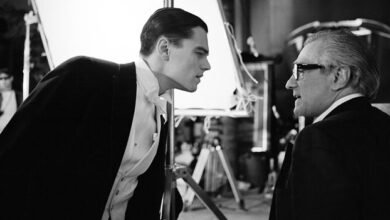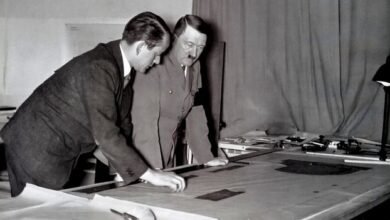How cult 90s film La Haine reflects France’s social issues

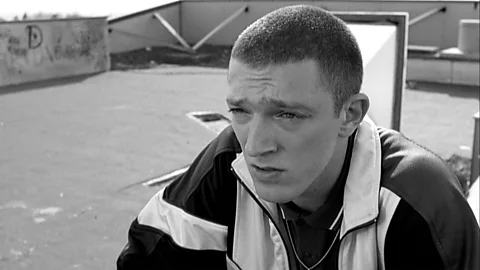 Alamy
AlamyAs a new hip-hop musical adaptation of the French classic opens in Paris, the film’s director Mathieu Kassovitz talks about the problems that inspired his work and how it remains relevant today.
Barely a week after Mathieu Kassovitz had announced on social media that he was working on a musical adaptation of his 1995 film La Haine, 17-year-old Nahel Merzouk was shot and killed by a police officer in the Paris suburb of Nanterre. The event, which sparked demonstrations and riots across France last summer, was a shocking reminder of the killing that inspired La Haine in the first place.
Thirty years earlier, in 1993, 17-year-old Zairian immigrant Makomé M’Bowolé had been shot dead by a police officer while in custody. Kassovitz has said he started writing the film in the immediate aftermath of M’Bowolé’s death. La Haine follows three friends, Hubert, Vinz and Saïd, as they roam the streets of Paris and the suburb of Chanteloup-les-Vignes in the 24 hours that follow a police beating that has left a young man in hospital. The trio embody the phrase black-blanc-beur (black-white-Arab), which celebrates France’s multiculturalism, echoing the bleu-blanc-rouge of the French flag.
Filmed in black and white, and borrowing from Scarface and Taxi Driver, La Haine was a rare account of life in the deprived French banlieues, and became an immediate critical and box-office success. Kassovitz, then just 27, won best screenplay at the Cannes Film Festival. “It’s considered one of the first major films, or at least with this much visibility, to tell a story about people living in poor, working-class suburbs, and that also puts the question of police brutality at its centre,” says Rokhaya Diallo, a journalist and film-maker who grew up in Paris’s working-class 19th arrondissement and has written extensively about racism.
As the film approaches its 30th birthday, a hip-hop musical adaptation or “urban opera” of La Haine premieres in Paris this week, before touring France, and features around 15 songs by some of the big names in France’s rap scene. The music has been composed by French producer Proof, who has worked with artists such as electronic duo The Blaze, Matthieu Chedid, Gipsy Kings and pianist Sofiane Pamart.
“I wrote the film with the narrative dynamism of a musical in mind, based on a series of tableaux,” Kassovitz tells the BBC, “so this stage adaptation seemed to be the right format at the right time.” Thirty years ago, he was heavily influenced by hip-hop and the film features plenty of it, including a famous scene in which French DJ Cut Killer mixes US rapper KRS-One’s Sound of da Police with Edith Piaf’s Non, je ne regrette rien, so hip-hop seemed appropriate for the new musical. The timing seemed appropriate for the film to have a new lease of life, too. “I could see its imprint on society, which has spanned countries and generations with a subject that is unfortunately still relevant today,” he says.
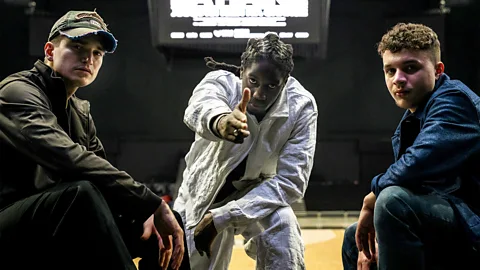 Getty Images
Getty ImagesIt’s this relevance – the perception of a lack of political change when it comes to police brutality – that has haunted La Haine for decades. A re-release of the film to mark its 25th birthday coincided with the Black Lives Matter movement protesting the number of deaths at the hands of police officers. After Nahel’s killing, the team behind the musical decided to change the film’s subtitle, Jusqu’ici tout va bien (So far, so good), to a more pessimistic expression reflecting the current mood: Jusqu’ici rien n’a changé (So far, nothing has changed.) “It came as a shock,” producer Farid Benlagha tells the BBC. When they started auditioning for the show, people turned up simply to talk about it. “There were people who had never taken part in a show or a film, but who came just because they wanted to tell us about their personal experiences. It was incredible; some people cried. This is a film that has to do with a bavure policière [“police mess-up”, a term used to describe the excessive use of force by the police], and these subjects are still not dealt with properly.”
‘Cultural clout’
The problems illustrated in the film feel just as urgent, if not more so, 30 years later. La Haine is making a comeback at a time when racism and xenophobia have seen a sharp rise across the country (one survey found that in 2023, reports of antisemitic and anti-Muslim acts increased by 284% and 29% respectively, while other types of racist acts increased by 21%). For many French people, it’s difficult to see the statistics and not think of the line spoken by Hubert, from where the film takes its name: “La haine attire la haine (hatred breeds hatred).”
Emmanuel Macron’s government has shifted to the right on security, identity and immigration, passing a controversial immigration bill and suppressing gilets jaunes protests. Yet the long-standing debate on police brutality was absent from the country’s snap election campaign – which was instead dominated by the far-right’s anti-immigration rhetoric and the cost-of-living crisis. “Since 1996 these deaths have been documented and counted, and yet no policy has been implemented to stop it,” says Diallo. In light of this, Kassovitz’s pessimism about cinema and its power to change things should perhaps not be surprising. “I don’t think it’s relevant to make political movies anymore,” he told the BBC’s Hard Talk in a recent interview. However, in our conversation, he provided some nuance. “I still believe in political films, but they’re not as indispensable as they used to be,” he says, adding that “people have better things to do”.
But what La Haine may have lacked in political impact, it makes up for in cultural clout. As the first major film to shine a light on the hardship in France’s multicultural suburbs, it opened the door to a generation of films about the banlieues, often made by people with those backgrounds. “The difference is that now they [the banlieues] are represented by banlieusards [suburbanites],” says Kassovitz, who grew up in a family of film-makers in central Paris. One of the most prominent examples of these films is the award-winning Les Misérables (2019), whose director, Ladj Ly, grew up in the Paris suburb of Montfermeil. Cédric Jimenez’s Bac Nord (2020), set in Marseille, similarly highlighted the problems faced by the police, while Céline Sciamma’s Girlhood (2014), Houda Benyamina’s Divines (2016) and Maïmouna Doucouré’s Cuties (2020) provided a much-needed female perspective that was previously lacking.
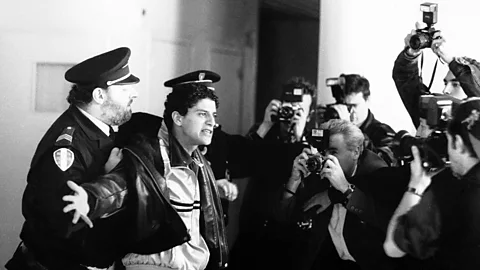 Alamy
AlamyOne cultural change of the past 30 years is that rap – which was booming at the time La Haine was released and was a major driving force behind the film – is now by far the country’s dominant music genre (France is the second biggest market for rap music in the world after the US). However, rap along with R&B and Afrobeats – genres that come out of working-class neighbourhoods – are often shunned by the music industry establishment. Aya Nakamura, the most listened-to francophone artist in the world, who grew up in the Paris suburb of Aulnay-sous-Bois, was snubbed by major music awards until this year, and was the victim of racist attacks after rumours suggested she would perform at the Olympics opening ceremony. She silenced her critics when she eventually performed at the ceremony in front of the Institute de France (which houses the Académie française). She sang a medley of her own songs and For me formidable by Charles Aznavour – a song in franglais about love crossing linguistic borders.
“For the establishment, for those attached to a kind of conservatism, it’s a cultural trend that is unwanted, unwelcome,” says Benlagha. “But this is the dominant culture, so even if they want to make it invisible, the figures, the data, is there.”
Making music a lead character in the musical, alongside Vinz, Hubert, and Saïd – now played by a new generation of actors who have grown up with the film – could also be an opportunity to showcase the genre’s strength and versatility while appealing to a broad audience. Despite his dim views, Kassovitz and his team see the upcoming show as a way to continue to take part in the debate. “I hope that it’s not because they laughed and sang for two hours, that people will forget why the show exists,” says Kassovitz. “The fight goes on.”
Source link


